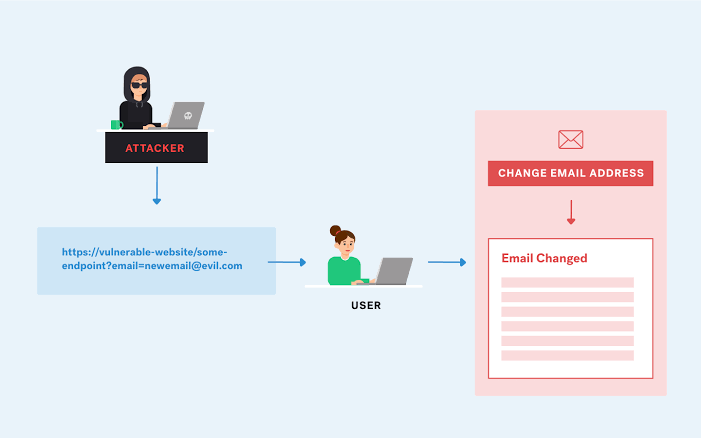Understanding Cross-Site Scripting (XSS): A Critical Web Vulnerability
Cross-Site Scripting is a significant threat to web security, capable of causing severe damage to both users and businesses.

Cross-Site Scripting (XSS) is one of the most common and dangerous web vulnerabilities. It allows attackers to inject malicious scripts into web pages, compromising users' security and trust. In this article, we’ll explore XSS, its types, impact, prevention, and mitigation techniques.
What is Cross-Site Scripting (XSS)?
XSS is a type of injection attack where attackers insert malicious scripts into websites that unsuspecting users visit. These scripts execute in the victim’s browser, allowing attackers to steal sensitive data, hijack sessions, or perform other malicious activities.
How Does XSS Work?
-
Injection: The attacker injects malicious code into a vulnerable website or web application.
-
Execution: When a user interacts with the website, the malicious code executes in their browser.
-
Attack Impact: The script can steal cookies, redirect users to malicious sites, or impersonate the victim.
Types of XSS Attacks
1. Stored XSS (Persistent XSS)
In this attack, the malicious script is permanently stored on the target server, such as in a database or comment section. Every time a user views the compromised page, the script executes.
Example:
<script>alert('XSS Attack!');</script>
2. Reflected XSS (Non-Persistent XSS)
The malicious script is reflected off the server and embedded in a URL or input field. When a user clicks the link, the script runs in their browser.
Example:
<p>https://example.com?search=<script>alert('XSS')</script></p>
3. DOM-Based XSS
In this variant, the attack occurs directly in the Document Object Model (DOM) of the victim’s browser, without involving the server.
Example:
var userInput = location.hash.substring(1);
document.write(userInput);
If a user navigates to
<p>https://example.com#<script>alert('XSS')</script>,</p>
the script executes.
Impact of XSS Attacks
-
Data Theft: Steal sensitive information like cookies, credentials, and tokens.
-
Session Hijacking: Gain unauthorized access to user accounts.
-
Malware Distribution: Redirect users to malicious websites.
-
Reputation Damage: Compromises trust in the affected website or application.
Real-World Examples of XSS Attacks
1. Social Media Platforms: Exploited XSS vulnerabilities to spread malicious links.
2. E-Commerce Websites: Injected scripts to steal payment information.
3. Online Forums: Used persistent XSS to execute scripts in user comments.
How to Prevent Cross-Site Scripting
1. Input Validation and Sanitization
-
Validate user inputs and reject unexpected characters.
-
Sanitize inputs by encoding characters like <, >, and &.
2. Use Content Security Policy (CSP)
- Implement a CSP to restrict the execution of untrusted scripts.
Example:
Content-Security-Policy: default-src 'self';
3. Escape User Input in HTML
- Use escaping libraries to safely display user input. For example, in JavaScript:
element.innerText = userInput;
4. HTTPOnly and Secure Cookies
-
Mark cookies as HttpOnly to prevent JavaScript access.
-
Use the Secure flag for cookies in HTTPS-only communication.
5. Avoid Inline Scripts
- Move inline scripts to external files to improve control and security.
XSS Detection and Mitigation Tools
-
Automated Security Scanners: Tools like Burp Suite and OWASP ZAP can detect XSS vulnerabilities.
-
Web Application Firewalls (WAFs): Block malicious traffic before it reaches your application.
-
Regular Security Audits: Periodically test your application for vulnerabilities.
-
Best Practices to Stay Safe from XSS
-
Educate Developers: Train your team to write secure code.
-
Keep Frameworks Updated: Use the latest versions of libraries and frameworks.
-
Test Continuously: Perform regular penetration testing to identify and fix flaws.
-
Adopt Secure Development Lifecycle (SDLC): Incorporate security at every stage of development.
The Future of XSS Prevention
With advancements in web security, modern frameworks like React and Angular have built-in defenses against XSS by default. However, vigilance and secure coding practices remain critical as attackers evolve their tactics.
Conclusion
Cross-Site Scripting is a significant threat to web security, capable of causing severe damage to both users and businesses. Understanding how XSS works and implementing robust prevention techniques is essential for safeguarding web applications and maintaining trust.
Stay proactive, secure your applications, and ensure a safer web for everyone.
Disclaimer
The information provided in this article, "Understanding Cross-Site Scripting (XSS): A Critical Web Vulnerability," is for educational and informational purposes only. It aims to raise awareness about web security threats and promote secure coding practices.
Leave a Comment
Releted Articles

Understanding SSRF Vulnerability: A Complete Guide
SSRF is a critical vulnerability that can compromise internal systems and expose sensitive data.

Cross-Site Request Forgery (CSRF): A Comprehensive Guide
Cross-Site Request Forgery is a serious vulnerability that can compromise the security of web applications

The Ultimate Guide to SQL Injection (SQLi)
SQL Injection remains a significant threat to web application security.

Web Security : Safeguarding the Digital World
In today’s interconnected world, web security is more critical than ever. As businesses and

Cybersecurity Roadmap for 2025: A Step-by-Step Guide to Success
Cybersecurity is a rapidly evolving field that demands continuous learning to stay ahead of






0 comments
There is no any command yet!